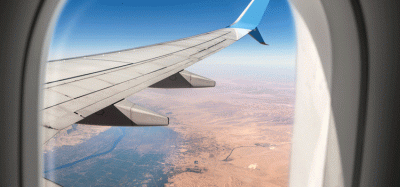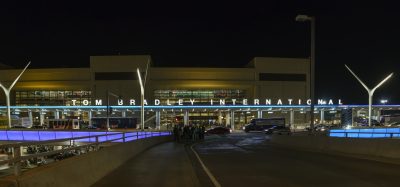Non-EU passenger traffic continues to drive European growth, new figures reveal
- Like
- Digg
- Del
- Tumblr
- VKontakte
- Buffer
- Love This
- Odnoklassniki
- Meneame
- Blogger
- Amazon
- Yahoo Mail
- Gmail
- AOL
- Newsvine
- HackerNews
- Evernote
- MySpace
- Mail.ru
- Viadeo
- Line
- Comments
- Yummly
- SMS
- Viber
- Telegram
- Subscribe
- Skype
- Facebook Messenger
- Kakao
- LiveJournal
- Yammer
- Edgar
- Fintel
- Mix
- Instapaper
- Copy Link
Posted: 11 July 2018 | International Airport Review | No comments yet
The rate of European air traffic expansion slowed in May but still saw a healthy 6.1 per cent rise on the same period in 2017.


Passenger numbers entering the European Union from outside continued to increase at a substantially higher rate than traffic inside the bloc in May, a report from ACI EUROPE has found.
Overall, passenger traffic grew by 6.1 per cent when compared with the same month in 2017, a slight deceleration on the 7.6 per cent growth rate in the first quarter of this year.
The non-EU market was up 8 per cent in May, slowing from 12.5 per cent in Q1. While gains were especially strong at airports in Georgia (27 per cent), Iceland (26.5 per cent), Montenegro (22.2 per cent), Ukraine (20.7 per cent), FYROM (16.1 per cent) Albania (14.1 per cent) and Israel (12.5 per cent), the pace of growth was more moderate in Russia (8.6 per cent) and Turkey (7.5 per cent).
Inside the bloc, traffic increased by 5.5 per cent over the month, 0.7 per cent slower than the Q1 average. ACI EUROPE attributed the limited growth to ATC & airline strikes, the lasting impact of the bankruptcies of Air Berlin & Monarch and weather disruptions. As in previous months, airports in the Eastern and Southern parts of the EU along with Finland and Luxembourg significantly outperformed this average.
Passenger numbers top five European airports grew by 3 per cent, on the back of a rather contrasted performance. While Frankfurt came on top, with a 9.5 per cent increase, Istanbul-Atatürk registered the lowest performance at -0.3 per cent. Meanwhile, passenger traffic grew by 3.1 per cent at London-Heathrow, 3 per cent at Amsterdam-Schiphol and 2.1 per cent at Paris-CDG.
Freight traffic was almost flat in May across the European airport network with a 0.8 per cent increase – confirming a significant downward trend since the beginning of the year. Aircraft movements were up 2.6 per cent, increasing by just 1.9 per cent in the EU market – again, ACI EUROPE said this was a reflection of ATC & airline strikes, the bankruptcies of Air Berlin & Monarch and weather disruptions. Aircraft movements increased by 4.2 per cent in the non-EU bloc.
The airports that reported the highest increases in passenger traffic during May 2018 (compared with May 2017) are as follows:
GROUP 1 ( serving +25 million passengers per year):
- Antalya AYT (+32.7 per cent)
- Lisbon (+13.4 per cent)
- Moscow SVO (+11.5 per cent)
- Dublin (+10.2 per cent)
- Madrid (+9.6 per cent)
GROUP 2 (10-25 million pax):
- Kiev (+22.2 per cent)
- Moscow VKO (+16.8 per cent)
- Athens (+15.4 per cent)
- Warsaw WAW (+15.1 per cent)
- Budapest (+13.4 per cent)
GROUP 3 (5-10 million pax):
- Keflavik (+26.5 per cent)
- Seville (+26.1 per cent)
- Rhodes (+20.8 per cent)
- Riga (+20.4 per cent)
- Thessaloniki (+18.2 per cent)
GROUP 4 (less than 5 million pax):
- Taranto (+1100 per cent),
- Foggia (+191.4 per cent),
- Batumi (+53.4 per cent),
- Poznan (+46.7 per cent)
- Varna (+44.7 per cent)
The ACI EUROPE Airport Traffic Report – May 2018 includes 229 airports in total representing more than 88 per cent of European air passenger traffic.
Related topics
Air freight and cargo, Air traffic control/management (ATC/ATM), Capacity, Passenger volumes, Route development


















